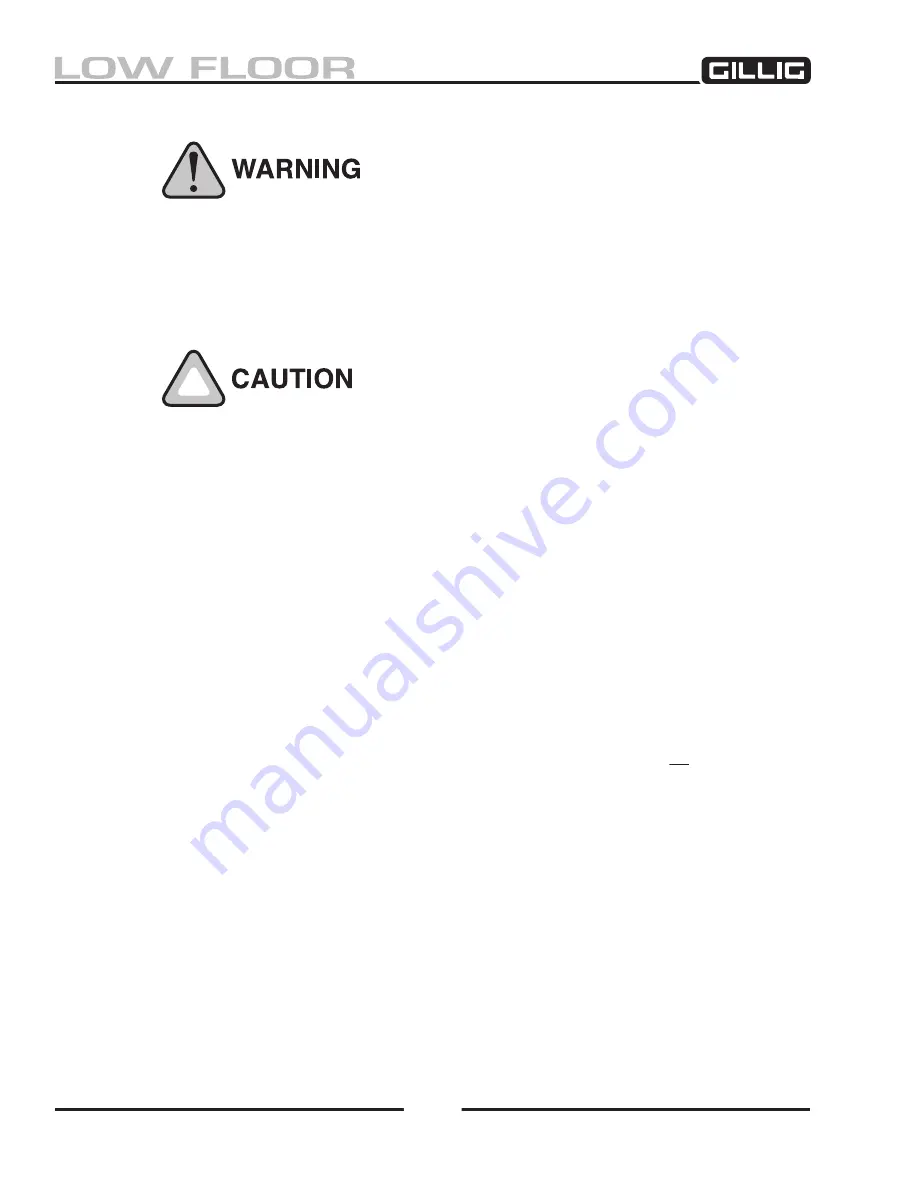
Electrical System
350
Charging the Battery
Charging lead-acid batteries generates hydrogen gas, which is highly
explosive. If ignited by a spark or flame, the gas may explode violently,
causing spraying of acid, fragmentation of the battery, and severe
personal injury. Wear a face shield when working near batteries. In
case of contact with acid, immediately flush the affected area with large
quantities of water for 15 minutes and get prompt medical attention.
Care must be taken to ensure that the batteries are not overcharged.
Voltage at the alternator output posts should not exceed 28 +/– 0.2 volts.
If the voltage is too high, the voltage regulator may need adjustment or
the alternator or voltage regulator is operating improperly and must be
repaired or replaced.
The battery may be charged by the Slow Charge, Fast Charge, or Emergency Boost Charge methods.
The methods differ only in the length of time the battery is charged and the rate at which the charging
current is applied.
Before charging the battery, carefully read and follow all the instructions pro-
vided with the battery charger being used and the specifications of the battery manufacturer.
Slow Charge:
This method supplies the battery with a relatively low current flow for a relatively long
time. This is the only method that will bring the battery to a full state of charge. The slow charge method
consists of charging at about a 9 amp rate for 24 hours or more, if necessary, to bring the battery to full
charge. A fully charged condition is reached when the cells are gassing freely and three corrected spe-
cific gravity readings, taken at hourly intervals, show no increase. Note: you can determine how long it
will take to slow charge a fully discharged battery by dividing its ampere/hour rating by the charge rate.
For example, a battery with a 215 ampere/hour rating would take 24 hours to charge:
215
9
= 24
Fast Charging:
The fast charge method supplies current to the battery at a 40 to 50 amp rate for about
an hour and a half. If the electrolyte temperature reaches 125° F (52° C) before the one-and-one-half-
hour period is completed, the battery must be taken off charge temporarily, or the charging rate reduced,
to avoid damage to the battery. Although a battery cannot be brought to a full charge with the fast charge
method, it can be substantially recharged or “boosted.” In order to bring the battery to a fully charged
condition, the charging cycle must be finished with the slow charge system.
Emergency Boost Charging:
In cases where the battery is not sufficiently charged to crank the engine,
an emergency boost charge may be applied as a temporary expedient in order to crank the engine. The
emergency boost charge method consists of charging at the maximum amperage rate available from
the battery charger for a period of one half hour. This method will not necessarily restore the battery
to a useful state of charge for continued service. Although an emergency boost charge may put enough
energy into the battery to crank the engine once, further slow charging is usually necessary in order to
create a sufficient reserve for normal service.
Summary of Contents for LOW FLOOR
Page 18: ...Specifications 18...
Page 58: ...Preventive Maintenance 58...
Page 110: ...Engine 110...
Page 138: ...Transmission Driveline Rear Axle 138...
Page 182: ...Suspension 182...
Page 260: ...Air System 260...
Page 420: ...Electrical System 420 Deutsch DT Series Connectors...
Page 421: ...Electrical System 421...
Page 422: ...Electrical System 422 Deutsch HD 10 Series Connectors...
Page 423: ...Electrical System 423...
Page 424: ...Electrical System 424 Deutsch HD 30 Series Connectors...
Page 425: ...Electrical System 425...
Page 442: ...Heating Air Conditioning 442...
Page 492: ...Body and Interior 492 Figure 11 33 USSC Seat Assembly...
Page 493: ...Body and Interior 493 Figure 11 34 USSC Seat Suspension Assembly...
Page 495: ...Body and Interior 495 Figure 11 37 Seat Air Connections...
































